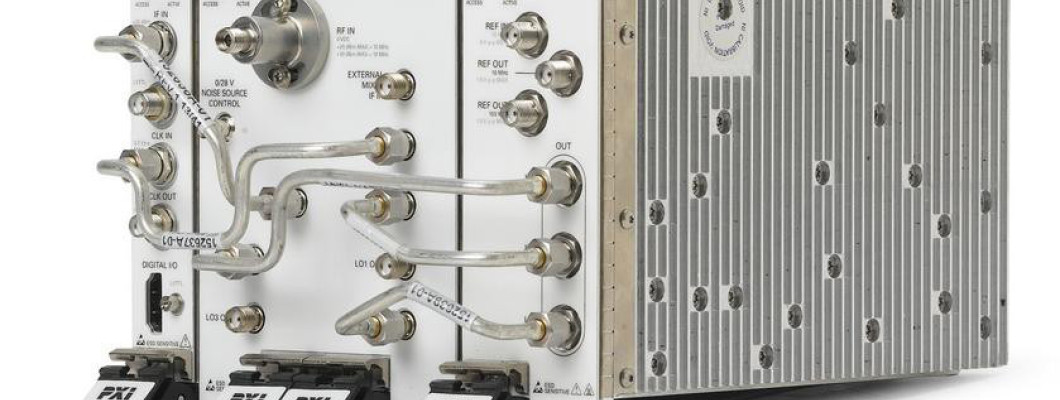
Reading Phase-Noise Specs Correctly on PXI Vector Signal Analyzers
Published by: Sohoprolab Editorial Team | Date: July 8, 2025
Introduction
Phase noise is one of the most critical specifications in RF and wireless testing — especially in systems where signal purity, spectral integrity, and jitter are crucial. PXI-based vector signal analyzers (VSAs) offer compact, high-performance phase-noise analysis, but understanding their datasheets can be tricky. This guide explains how to read phase-noise specs accurately, interpret offset frequency data, and avoid common misunderstandings during system selection or test setup.
What Is Phase Noise?
Phase noise describes the frequency-domain representation of short-term signal instability. It represents the power of noise in a 1 Hz bandwidth at a given offset from the carrier, typically measured in dBc/Hz. In practice, excessive phase noise can degrade adjacent channel performance, increase bit-error rates, and introduce spectral leakage in modulated signals.
Phase noise appears as skirts or "shoulders" around the carrier in the frequency domain. Accurate measurement and interpretation of phase noise are essential in applications like LO testing, radar, satellite comms, and wideband modulation analysis.
Key Specification: Offset Frequency
One of the most misunderstood aspects of reading VSA phase-noise specs is the offset frequency — the distance from the carrier where phase noise is measured. Specs might read something like:
–106 dBc/Hz @ 10 kHz offset
This means the phase-noise floor is 106 dB below the carrier power when measured 10 kHz away from the center frequency — in a 1 Hz measurement bandwidth. Offset frequency is critical because phase noise behaves differently at 1 kHz, 10 kHz, and 1 MHz. A spec at 10 kHz may look better than one at 1 kHz but may not reflect close-in jitter performance.
How PXI VSAs Present Phase-Noise Specs
Unlike traditional benchtop analyzers, PXI VSAs often present phase-noise performance graphically or in software tools like RFmx Spectrum Analyzer. Key considerations include:
- Carrier Frequency Range: Always confirm the center frequency used in the spec (e.g., 1 GHz vs. 3 GHz).
- Measurement Bandwidth: Many specs are normalized to 1 Hz, but some use integration over a wider band.
- Typical vs. Guaranteed: PXI instruments often list typical values — check footnotes for conditions.
- Environmental Conditions: Specs vary with temperature, especially in tightly integrated PXI chassis.
Examples of PXI VSA Phase-Noise Specs
- NI PXIe-5668R: Phase noise of –129 dBc/Hz @ 10 kHz offset, 1 GHz carrier
- Keysight M9393A: Phase noise of –123 dBc/Hz @ 10 kHz, 3 GHz carrier
- R&S FSVR PXIe Variant: –120 dBc/Hz @ 10 kHz, 2 GHz carrier
These numbers seem close — but if you're testing a 5G NR uplink or a radar chirp, close-in phase noise at 1 kHz or 100 Hz offset may matter more than at 10 kHz. Always analyze the full curve if available.
Common Mistakes to Avoid
- Ignoring Offset Frequency: Specs at higher offsets can hide poor close-in performance.
- Confusing Integrated Phase Noise with Spot Value: One shows total jitter, the other shows noise at a specific offset.
- Overlooking Environmental Footnotes: Phase noise can worsen under heat or vibration.
- Comparing Across Bandwidths: Always check if the spec is normalized to 1 Hz or not.
FAQ: Phase Noise in PXI VSAs
- Is lower phase noise always better?
- Generally yes, but it depends on the application. For demodulation, jitter may be more critical than absolute noise floor.
- What offset frequency should I focus on?
- For wideband signals, look at ≥10 kHz. For narrowband, LO, or clock jitter tests — 100 Hz to 1 kHz is more important.
- How does PXI compare to benchtop analyzers?
- Modern PXI analyzers offer competitive noise performance, especially when paired with external low-noise references.
Conclusion
Interpreting phase-noise specifications correctly is vital for accurate system selection and test performance. PXI VSAs like the NI PXIe-5668R offer excellent dynamic range and phase-noise performance — but you must understand how to read and compare specs meaningfully. For more RF measurement tools, explore our Electronic Test & Instrumentation section or browse PXI Modules compatible with RF testing and signal analysis.
